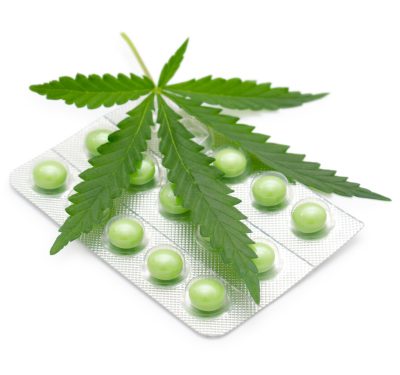Interactions between drugs, including combinations of drugs with medical cannabis, are not necessarily negative phenomena.
In most cases, these combinations primarily necessitate attention in order to perform the most efficient adaptation of the dosages of the older drugs or the cannabis pursuant to the major reactions and adverse effects. In a large number of cases, cannabis affects precisely the same system as the original drug and a cumulative effect is possible.
If possible, administering the cannabis and other drugs separately is recommended if it is taken a number of times a day. If the drug is taken once a day only, use the cannabis regularly according to need.
Under no circumstances is it recommended to stop taking the other drug, or change its dosage, without consulting the attending physician.
Because information on combining medical cannabis with of the drugs has not yet been sufficiently based on organized medical studies, in any event in which the medical cannabis faces an adverse effect that could be caused by any combination whatsoever with another drug, reporting to the physician and proceeding with the utmost caution is recommended.
Pharmacodynamic interactions
Increase or decrease the effect of taking other drugs with similar effects at the same time. There is a dependence on the concentrations of active substances and doses of cannabis.
Drugs for central nervous system – opiate painkillers, sedatives, alcohol, enhancing tiredness, dizziness, weightlessness and even an increased risk of respiratory depression (opiates).
Muscle relaxants and benzodiazepines – increased muscle weakness (risk of falling).
Drugs for hypertension – a sharp decline in the value until the re-use of drugs.
Sugar lowering drugs – Reduction of glucose values and the need for readjustment.
Anticholinergics – antidepressants, antihistamines: an increase in the chance of arrhythmias.
SSRI – increase in serotonin levels and risk of mania.

Pharmacokinetic interactions
Pharmacokinetic interactions resulting from the reduction or the severity of degradation of marijuana in the liver. In addition, some marijuana breakdown products also have a pharmacological effect.
There are situations in which cannabis itself increases or decreases liver enzymes, and thus changing the rate of its activity.
Due to fact that information is still inaccessible for each patient to monitor and report significant changes to attending physician, you may need to restore your balance (reduce or increase your dose) or change your existing medicines.
More interactions
Other types of interactions reported in the scientific literature, but insufficient information based on them:
Drug for enhancing sexual drive – increased risk of heart attacks.
Antibiotics in the treatment of skin infections – Poseidon.
Drugs for treating HIV.
Amphetamine preparations or their derivatives – Preparations for slimming, for attention and concentration phenomena and even dental treatment (adrenaline) that is sometimes used as an anesthesia – increase blood pressure and a rapid heart rate.
Drugs that contain the Hypericum plant (Remotiv).
Anticoagulants that contain Warfarin (Coumadin) – A rise in INR values.
CBD high-dose products
Generally CBD products have very few side effects reports. Below are presented potential phenomena resulting from the performance analysis mechanism and have not been sufficiently studied in controlled trials:
High doses may cause or suppress immune activity.
Using carefully for patients with cancer (in immunological drug therapy).
Using carefully for patients with weakened immune systems.
Using carefully for patients whose are during organ transplantations.
